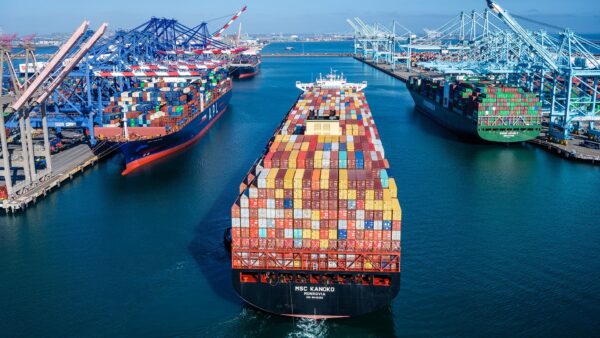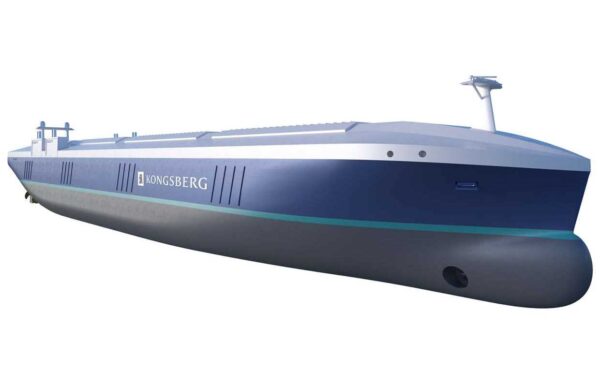INNOVATION AND DIGITALIZATION FOR SUSTAINABLE SHIPPING
BY DR. EMI MEMBERE-OTAJI
Dr. Emi Membere-Otaji is a Medical Doctor and Entrepreneur. He was the Guest Speaker at 2022 Annual Business Luncheon and Magazine Launch of the Women’s International Shipping and Trading Association(WISTA)Nigeria. He spoke on the theme: Innovation and Digitization for Sustainable Shipping. Enjoy his engaging presentation.
INTRODUCTION
The term shipping originally and in the context of this paper refers to transport of goods and persons by sea.
Sea borne mode of transportation accounts for about 90% of total global trade. Thus, shipping highly affects global and national economies. Sea borne transportation also offers movements of large volumes of freights and at relatively lower costs. United Nations Conference on Trade and Development (UNCTAD), predicated drop in the average annual growth rate of shipping during the Covid 19 pandemic period and significant upswing thereafter.
EVOLUTION AND INNOVATION OF SHIPPING
Then came the ages of sail ships, with fabric sails mounted on masts to harness power of wind for propulsion. Earlier empires of the world, the Romans, Greeks and others used shipping for movement of their armies and armories to conquer and rule over significant parts of the then world. Sail boats which were relatively faster, larger and safer than earlier ships also witnessed much ship wrecks and piracies.
Up to this time, there were no standardized containers, and goods were packed into sacks, wooden crates and barrels of all sizes and placed below ship decks. Then came the era of steam (coal fired and powered) ships, propelled by one or two steam engines that typically move propellers or paddle wheels.
The first steam ships came into operation around the 1800s. They were less dependent on wind, were bigger, faster, safer and moved further into the sea, supporting international trade. They were typically made of metal. The unfortunate and doomed RMS TITANIC passenger liner was a steamship. The renowned American philanthropist and millionaire Cornelius Vanderbilt acquired his fortune and significance, which has remained to this day, from steamship business, started in 1829.
Shipping intricate and large as we know it today, came into being around the 1900s, mainly after the World Wars. Need for cleaner and better fuel efficiency led to use of faster diesel fuel powered stroke engines. In 1956, an American truck driver, Malcom Mclean developed the first standard metal shipping container. The use of metal containers, revolutionized the shipping industry. Today standardized containers are in grades, for different types of goods, even for refrigerated goods and flowers. By the 1980s about 90% of manufactured goods were containerized, Globalization exploded and with it world trade, changing and adapting to meet the needs of the market place.
From the above, the shipping industry has evolved over time and witnessed a sequence of innovations. The industry thus innovated to solve lingering problems, compete better to cut costs, improve efficiencies, service delivery or processes, safety or quality of goods or services ultimately disrupting competitors to stay ahead of the pack or even navigate out, in times of business turbulence.
Innovation in the shipping industry is premised on the:-
(A) Non-Core Digital Technologies
(B) Core Digital Platforms
In the past couple of years, ot her industries including financial services, retail, etc. have had up swings in innovations, but the conservative and fragmented shipping industry has not been that fast. Innovations have had to occur in silos and to date has focused more on the operational performance of the assets.
To make a significant paradigm shift, according to Andy Mckeran, Director of Maritime Services of Lloyds Register “People are going to have to reinvent their business models and start looking at performance based trading”. He stated also that “the priority is to map shipping’s “value stream” from construction through to how contracts are set up and how the vessels are embedded into a more circular economy”. The bottom line is that for innovation to make the desirable impacts in the value chain, collaboration, scale, data and entirely new set of business models are required.
1. Greener Shipping at Ship Design and Ship Building
There is a constant pressure to reduce the carbon footprints of the world’s shipping fleets and this will increase into the future. Already the International Maritime Organization (IMO), has committed to a maritime emission reduction agreement in 2018, requiring the shipping industry to reduce carbone missions by 50% in 2050. To this effect, industry players are exploring use of low carbon fuels, more streamlined hulls, more efficient propeller design, improved voyage planning to make savings on fuels, better hull coatings and even air cushions to reduce frictions, apply Just In Time (JIT) ship arrival scheduling’s to short-haul shipping.
NON CORE DIGITAL TECHNOLOGIES
´There‘s growing interest in the use of LNG as fuel for commercial ships. LNG as fuel will not only reduce carbon footprints (by as much as 25%), but will reduce cost of ship fueling.
Today many ships plying international waters are partly electrified through diesel-electric transmission systems. Some smaller vessels are already running only on electric transmission system.
´Use of solar panels and other forms of renewable energy to power fleets of the future are also being explored.
In all, the “Teslas of the Seas” in commercial shipping is closer than earlier imagined.
2. Bigger Megaships
Improvements in ship technology, structure and materials will lead to even bigger mega ships particularly within the container shipping and cruise liner subsectors. Already, container ships of 400 meters in length and more carrying over 20,000 TEUS of containers and cruise ships of 18 decks are in service today. Ship owners will seek to take advantage of the size with its associated lower transport costs to make maximum use of space.
3. Ports and terminal upgrades to improve their capacities, capabilities and efficiencies are also key.
INNOVATING WITH DIGITALIZATION
The world has gone digital and its application of acilitate and enhance sea borne trade is here with us and also portends endless possibilities for the future of shipping.
The fourth industrial revolution is expected to immensely affect maritime transport, Shipping 4.0, with technological trends like Big Data Analytics, Automation, Internet of Things (IoT), and Artificial Intelligence (AI) etc driving a new path way for the shipping industry’s digital transformation, where smart autonomous ships will shape a new and fully inter connected maritime eco system.
Smart ships to smart ports connectivity to decongest, decarbonizes and provide seamless coordination of the shipping value chain.
Digitalizing the freight forwarding subsector from the often chaotic and analogue processes to more seamless, end-to-end, digitally enabled solutions, where the services of companies like MVX, One Port 360 and soon are increasingly expected to shake tables in Nigeria, like their peers in Fin tech are disrupting the financial services industry.
The 2020 Covid-19 pandemic turbulence and its disastrous shocks and after shocks, on global trade brought digitalization of the shipping industry to the front burner and more realizable.
THE SMART SHIP, SMART PORT AND CONNECTIVITY
A)Digital Cargo and Bay Arrangements-Ability to classify and differentiate containers and goods on the basis of their time frame of delivery (priority and non-urgent)is key, for evacuation at port. Also container ships and other cargo vessels carry hundreds or thousands of containers of varying sizes, weights and destinations. Thus precision of arrangements is key to improving efficiencies. With so many parameters and deciding factors, it is cost effective to have technology such as digital optimization to take over and decide the best container bay arrangements.
B) With appropriate digital platforms, anchorage time will be shortened. If the aviation
Industries can nail down flight arrival time to near specificity, Just-In-Time (JIT) processes can save shipping operation costs, efficiency and disruptions including schedules for others in the logistics value chain. This is beside it’s positive effects on ships carbon emission, as any cause for delay on ship berthing at port will automatically cause reduction in speed for the vessel to arrive, just on time for berth space availability.
In fact an IMO-led Global Industry Alliance Simulation study at the port of Rotterdam shows that J.I.T. arrivals at Europe’s largest port led to a whole 23% decrease in fuel consumption and of course drop in carbon emission. In Nigeria’s Lagos ports, if applied, gross shipping costs and other related complications will drastically cut shipping costs, ease of doing business and improve our economy.
C) Improve Ship Operations, Ship Maintenance And Management:- With sensors on appropriate platforms using Internet of Things (IoT) and Artificial Intelligence, aspects of ships such as latch doors, bays, bulk head systems, hydraulics and even cabins can be remotely controlled. Besides, the platforms can monitor the various systems and components of even massive ships. Smart technology that connects parts of the ship to a central server can make for the control of almost all systems on board a ship including real-time monitoring and control of propulsion, maneuvering controls, communications and indeed almost all machinery and equipment of the ship, making ship operations and even maintenance easier and safer.
The captain will have greater control of the ship. Besides, smart ships can be managed from the shore, remotely.
With Artificial Intelligence, robots can be used for ship in sections and maintenance, entering areas hither unsafe for human crew besides also providing security on board.
Drones are now even being used fort asks such as delivery of goods unto vessels. Digitalization of ship operations can accurately keep vessels on course without requiring frequent in puts from the helms manor captain, thus reducing human error and also allowing for real time, route information.
D) In general, ships follow routes that are pre-set and have been determined based on several input data. The idea is that by studying ocean conditions, historic trends and other factors, ship operators can sketch an accurate route that will take the least time.
Real-time route management can play a major role in improving the journey duration and efficiency. Considering the long periods that ships remain at sea, and the possibility that ocean conditions can vary drastically over a matter of a few hours, it is important that real-time data is available for ship operators to use.
This can include weather patterns, piracy alerts, port traffic and other varying parameters. In addition, by allowing computational of ware to handle the routing, an accurate path can be developed that factors in several variables.
E) With appropriate deployment of digital platforms, maritime security can be improved upon, as clearly seen in the effects of the Nigerian Maritime Administration and Safety Agency (NIMASA) Deep Blue Project, for integrated maritime security containment in West and Central Africa with the aim of tackling incidences of piracy, sea robbery and other crimes at sea with the Command, Control, Communication, Computer and Intelligence (C4i), intelligence gathering, data collection and swift interventions platforms. With this, piracy in the Gulf of Guinea reportedly reduced from 81 incidents in 2020 to 34 in 2021, according to the International Maritime Bureau.
F) Big Data Analytics will be very helpful in the ship registry so all information of ships registered in the Ship Registry can be accessed. This will help stake holders greatly. Also, if data mining and automation in the Ship Registry is properly mined, the nation’s Cabotage regime can be better managed and implemented.
BARRIERS TOWARDS DIGITAL UPTAKE IN THE MARITIME INDUSTRY.
With all the benefits enunciated, digital up take in the shipping industry is slower than expected, mainly due to difficulties in accessing data, lack of trust in data for fear of data quality, cybercrime, data rights owner ships, liability issues, lack of regulations and lack of standardization and scalability.
CONCLUSION
Ladies and gentlemen, a successful digital transformation in the maritime space, requires sustained political commitment, adequate regulation, effective collaboration between the public and private sectors, along with a concerted effort on education and skills training.
Though complete vessel autonomy maybe an ideological fantasy that may not come to fruition any time soon, there are lots of trail blazing technology to be excited about right now-digital solutions that can make today’s shipping green errand safer, crews more efficient, and the global supply chain much more fluid and efficient. They are not only a cost-effective and straight forward way to implement next-gentech, but also a more practical way to ramp up for the future generation.










